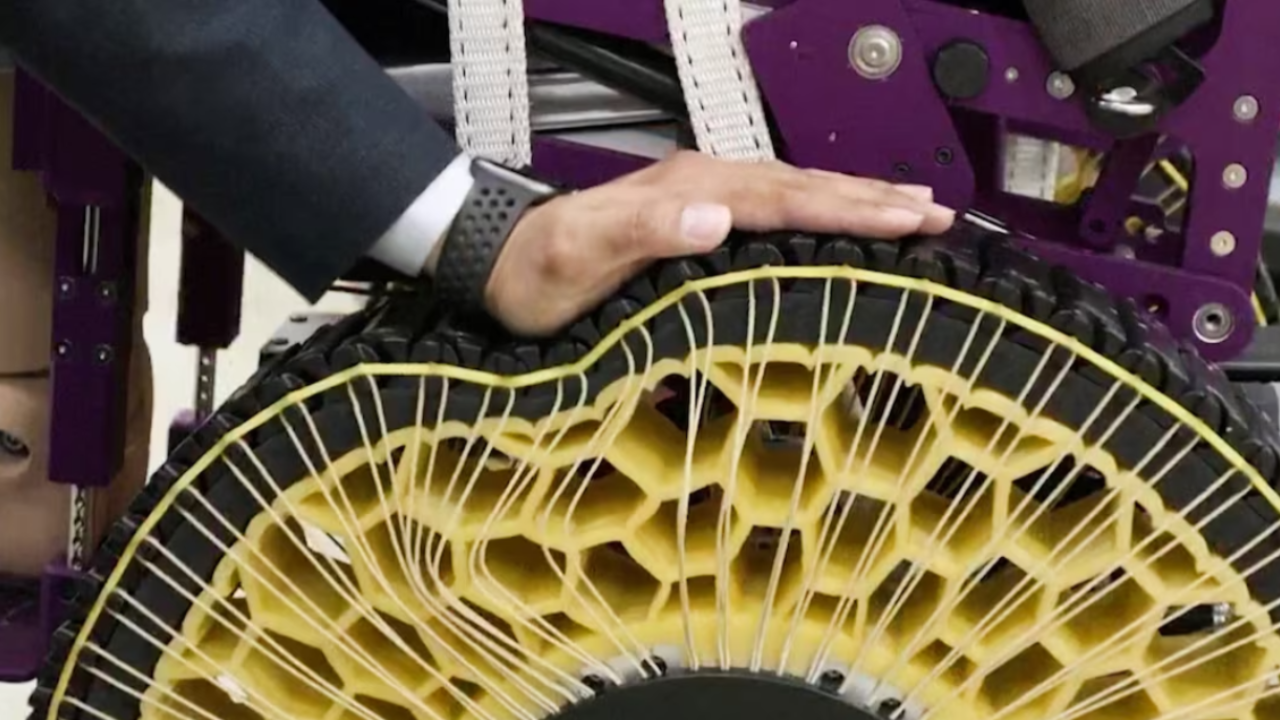
©Reuters TV/via REUTERS
Vocabulary:
I will read the words, meanings, and sample sentences. Then, repeat after me.
- morphing /MAWR-fing/
- impediment /im-PED-uh-muhnt/
- velocity /vuh-LOS-i-tee/
- prototype /PROH-tuh-tahyp/
- dummy /DUHM-ee/
[adjective] – changing shape or form
The morphing wings of the aircraft allow it to adapt to various flight conditions.
[noun] – something that makes progress, movement, or achieving something difficult or impossible
The heavy snowstorm was a major impediment to the rescue operation.
[noun] – the speed at which an object is travelling
The car increased its velocity as it entered the highway.
[noun] – the first example of something, such as a machine or other industrial product, from which all later forms are developed
The engineers built a prototype of the new electric scooter for testing.
[noun] – a model or replica of a person, used for practice or testing
The crash test involved a dummy strapped into the driver’s seat.
Article reading:
Please read the whole article. Then, I will check your pronunciation and intonation.
A groundbreaking innovation called the “morphing wheel” has been developed by the Korea Institute of Machinery and Materials (KIMM). The wheel is engineered to tackle obstacles measuring up to 1.3 times its radius, effectively handling barriers like curbs, bumps, and staircases. Inspired by the surface tension of water droplets, the wheel transitions between solid and fluid states when encountering impediments. The invention aims to enhance mobility for wheelchairs, delivery vehicles, and robots. In August, the wheel was featured as the cover article in Science Robotics. Principal researcher Song Sung-hyuk highlighted its potential, stating that it could enable speeds up to 100 kilometers per hour, equivalent to the velocity of an average car. Current wheel technologies, including airless tires, lack this level of adaptability, making the morphing wheel a significant advancement.
The morphing wheel features an outer hoop resembling a chain and spoke wires that link it to the hub. A built-in sensor adjusts the stiffness of the spokes in real-time, allowing the wheel to adapt to various terrains. KIMM demonstrated its capabilities by mounting the wheels on a prototype wheelchair, which successfully climbed 18-centimeter-high stairs while carrying a life-size dummy. Additional tests have shown the wheel’s ability to maintain stability at speeds of up to 30 kilometers per hour. The researchers aim to expand its applications to industrial robots and battlefield machines. The wheel’s potential impact spans across sectors, offering more efficient, durable, and versatile mobility solutions. Experts believe this innovation could revolutionize transportation and robotics, opening new opportunities in both public and private industries.
The morphing wheel features an outer hoop resembling a chain and spoke wires that link it to the hub. A built-in sensor adjusts the stiffness of the spokes in real-time, allowing the wheel to adapt to various terrains. KIMM demonstrated its capabilities by mounting the wheels on a prototype wheelchair, which successfully climbed 18-centimeter-high stairs while carrying a life-size dummy. Additional tests have shown the wheel’s ability to maintain stability at speeds of up to 30 kilometers per hour. The researchers aim to expand its applications to industrial robots and battlefield machines. The wheel’s potential impact spans across sectors, offering more efficient, durable, and versatile mobility solutions. Experts believe this innovation could revolutionize transportation and robotics, opening new opportunities in both public and private industries.
Discussion Questions:
I will read each question. Then, please answer them.
- Have you ever seen or learned about an invention that helps people with disabilities? If so, what was it, and how did it work? If not, why do you think such inventions are important?
- Imagine you are designing a wheelchair. What features would you include to help it move over stairs or curbs?
- Do you agree that inventions like the morphing wheel can make life easier for many people?
- How do you think the morphing wheel could change public spaces, like parks or malls?
- What challenges do you think researchers might face when trying to use the morphing wheel in everyday vehicles?
Summarization
Please summarize the whole article using your own words and expressions. You will have one minute to prepare before you answer.
Describe:
Please explain the definition of each word listed below based on your understanding. You can provide example sentences if needed.
- adaptability
- advancement
- groundbreaking
- innovation
- built-in sensor